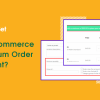Brute force attacks are one of the most common threats to WordPress sites. In a brute force attack, hackers systematically try to guess your login credentials, and if successful, they can gain full access to your site. In this post, we’ll dive into how brute force attacks work and the steps you can take to protect your site.
What is a Brute Force Attack?
A brute force attack is a method hackers use to crack passwords or usernames by systematically trying various combinations until they find the right one. For WordPress sites, attackers target the default login page (yoursite.com/wp-login.php) and attempt to guess usernames and passwords until they get access.
Why Brute Force Attacks are Dangerous
Brute force attacks can compromise your site’s security and stability in several ways:
- Unauthorized Access: Hackers can control your website if they succeed in logging in.
- Server Overload: Multiple failed login attempts put a strain on your server, which can lead to crashes or slow load times.
- Malware Infections: Attackers can inject malicious code into your site, compromising security and user data.
Here’s how to protect your site from these attacks:
1. Change the Default Login URL
Changing the default login URL from wp-login.php to a unique one makes it harder for attackers to find your login page.
- How to Change the Login URL: You can use a plugin like WPS Hide Login to create a custom login URL, such as
yoursite.com/custom-login. This doesn’t provide full protection, but it does make your login page harder to find.
2. Limit Login Attempts
Limiting the number of login attempts blocks users after repeated failures, reducing the chances of brute force success.
- Recommended Plugin: Limit Login Attempts Reloaded lets you set the maximum number of failed login attempts before locking out an IP address. This discourages repeated attempts and slows down attackers.
3. Use Two-Factor Authentication (2FA)
Two-factor authentication (2FA) requires a second form of verification, like a code sent to your phone, making it much harder for attackers to gain access even if they guess your password.
- How to Enable 2FA: Use Google Authenticator – Two Factor Authentication to enable 2FA for your login page. This extra layer of security is an effective defense against brute force attacks.
4. Use Strong and Unique Passwords
Weak passwords are easy targets in brute force attacks. Complex and unique passwords for each user account make guessing attempts much harder.
- How to Enforce Strong Passwords: Use Force Strong Passwords to require users to create strong passwords, especially those with admin roles.
5. Enable CAPTCHA on the Login Page
CAPTCHA requires users to complete a small challenge on your login form, blocking automated bots from logging in.
- Recommended Plugin: reCAPTCHA by BestWebSoft adds Google’s reCAPTCHA to your login form. This deters bots, adding an extra line of defense.
6. Monitor Login Activity
Keeping an eye on login attempts helps you detect suspicious patterns and take action quickly.
- Recommended Plugin: WP Activity Log provides a record of login attempts and user activity on your site. Reviewing this log regularly can alert you to unusual patterns, such as multiple failed attempts from one IP.
7. Use a Security Plugin for Comprehensive Protection
A security plugin combines multiple security features, like brute force protection, firewalls, and malware scanning.
- Recommended Plugin: Wordfence Security includes a firewall, login attempt limiters, IP blocking, and brute force protection. It’s a powerful tool to secure your site from many types of attacks.
8. Set Up IP Blacklisting and Whitelisting
You can block IPs that appear to be malicious or whitelist trusted IPs (like your home or office) to restrict login access.
- How to Set Up IP Blocking: Many security plugins, like Wordfence, allow you to block or whitelist IP addresses. Alternatively, you can adjust your server’s firewall settings.









